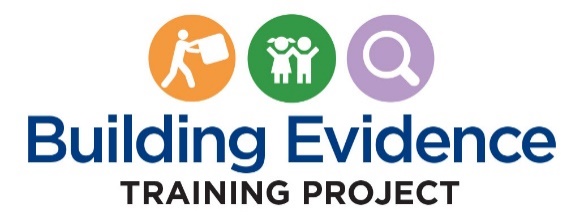Building Evidence Training (BET) Project Usability Testing
Fast Track Generic Clearance for Collection of Qualitative Feedback on Agency Service Delivery
Unit_2_Pre-Post_Test OMB Final
Building Evidence Training (BET) Project Usability Testing
OMB: 0970-0401
Expiration Date: 05/31/2021
PAPERWORK REDUCTION ACT OF 1995 (Pub. L. 104-13) STATEMENT OF PUBLIC BURDEN: The purpose of this information collection is to gain feedback on the course content and delivery. Public reporting burden for this collection of information is estimated to average .12 hours per response, including the time for reviewing instructions, gathering and maintaining the data needed, and reviewing the collection of information. This is a voluntary collection of information. An agency may not conduct or sponsor, and a person is not required to respond to, a collection of information subject to the requirements of the Paperwork Reduction Act of 1995, unless it displays a currently valid OMB control number. If you have any comments on this collection of information, please contact the Building Evidence Training Project at: [email protected]
Designing and Implementing Evidence-Supported Interventions in Child Welfare

Unit
2 pre/Post-test:
Building and Participating in Implementation Teams
Questions
Which statement below is an advantage of using teams for implementation?
The presence of teams makes collaboration with community stakeholders unnecessary.
Participating on an implementation team increases team members’ understanding of and buy-in for the intervention.
Teaming reinforces the need for evaluators to adhere to fidelity protocols.
All of the above.
A formal document describing the work a team will do and how the team will accomplish it is known as a:
Effective teams:
Have an organized way of communicating with each other.
Follow a decision-making process that allows them to move forward.
Share leadership and build relationships based on trust, cooperation, support, and constructive conflict.
Are accountable for clear goals and objectives.
All of the above.
True/False. Even evidence-supported interventions are unlikely to be successful if they are not well suited for the jurisdiction and the client population or are not implemented correctly. (Unit 1 cumulative question)
True
False
Select the accurate statement about teaming.
Implementation may require more than one team to complete all the work required.
The value of teaming is unique to the process of implementing child welfare interventions.
The teaming structure developed for one implementation team will work for any intervention or agency.
Teaming is only important during the exploration stage.
All of the above.
Why is it important for child welfare frontline workers and supervisors to understand the fundamental principles of implementation science? (Units 1 & 2 combination question)
Successful implementation of interventions requires teams with diverse expertise, skills, and perspectives.
Frontline workers and supervisors are often members of teams that help plan and guide the implementation of interventions.
Successful implementation depends in part on frontline workers and supervisors who provide or refer families to interventions.
All of the above.
True/False. Once a team has been formed, its members and their roles should not change.
True
False
You are in charge of forming a team to implement a chosen intervention. What types of staff could potentially contribute to the process?
CQI representative
A fiscal person
Child welfare front-line staff and supervisors
A person with project management expertise
All of the above.
None of the above.
They perform the role of preparing the communications protocol.
They have important knowledge about clients and what happens in the field.
They can do most of the planning work so other staff can focus on their jobs.
They select the intervention to be implemented.
All of the above.
Select that answer that best describes an important function of a communications protocol.
It describes how to implement an intervention with fidelity--the way it was designed.
It provides the action-planning model to systematically develop, manage, and evaluate interventions.
It specifies the frequency and methods of communication among associated teams to assure a coordinated effort.
It identifies the mission, goals, objectives, and deliverables of the implementation team.
Unit 2 Pre/Post Test
| File Type | application/vnd.openxmlformats-officedocument.wordprocessingml.document |
| Author | Karen Fenton-Leshore |
| File Modified | 0000-00-00 |
| File Created | 2021-01-14 |
© 2026 OMB.report | Privacy Policy